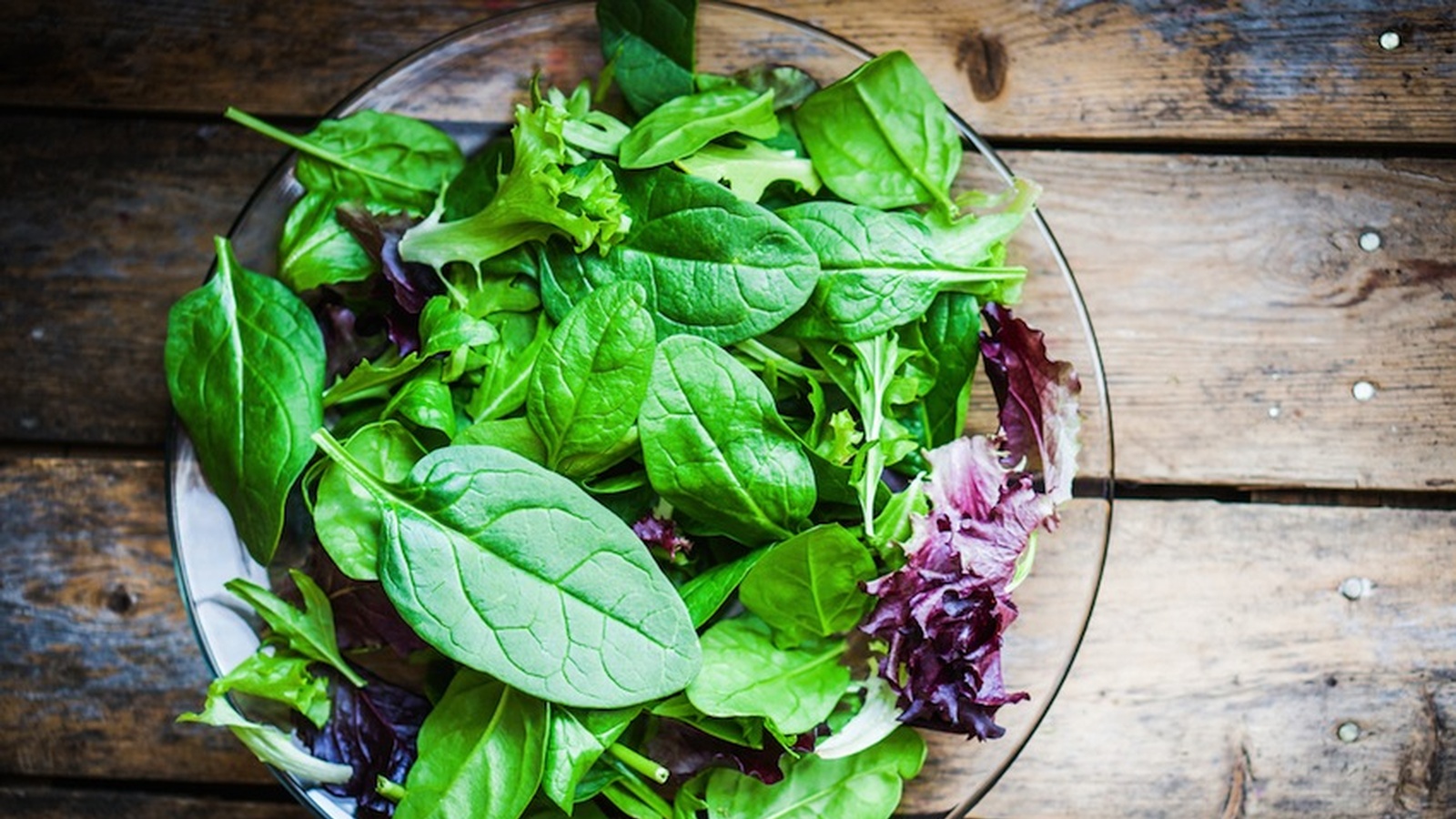10 Ways To Make Your Salad Taste Amazing!
I’ve seen salads in my time that would barely pass for dog food. Limp lettuce, wilted tomatoes and browning carrot… Hardly inspiring, is it?
My idea of a real salad is a plate that is popping with color, crunch and dazzling taste. This meal is a journey of flavors, textures and goodness that feeds my soul as much as my body.
And if you’re conscious about your health, it’s immensely helpful if you actually like (hopefully even LOVE) getting down your daily 2 & 5. Healthy eating is so much more sustainable when it tastes good, too!
These 10 tips will help you learn to love your daily bowl of salad goodness:
1. Design Your Own Dukkah
This Middle Eastern spice gives your tongue a kaleidoscope of flavors. It’s earthy, very mildly spicy) and so… well, Dukkah-ish. It’s perfect sprinkled over roasted veggies, steamed chicken, baked fish and falafel wraps. Moreover, it’s simply superb on salads!
Whilst you can buy Dukkah as a specialty item, it is generally less expensive to make your own. Simply rustically combine the following in a food processor or mortar and pestle:
- ½ cup activated nuts, such as almonds, hazelnuts (the traditional option) or brazil nuts
- ½ cup very lightly roasted white or black sesame seeds
- 2 tbsp ground or whole coriander seeds
- 2 tbsp ground or whole cumin seeds
- Salt & pepper, to taste (I sometimes even add a little kelp powder)
- Chilli or cayenne pepper, to taste
2. Activate Your Salad Flavor… With Activated Nuts!
Nuts add such delicious flavor and texture to a salad, and supercharge the nutritional quality as well. This is also a great option if you find that your salads don’t quite sustain you through to the next meal time… Nuts are sure to keep you fueled for longer!
Whilst roasting nuts tends to bring out their flavor and improve their crunch factor, the heat also damages the quality of their natural oils. A good alternative is to use activated nuts instead; they are crunchier than raw options but still have their nutritional properties intact.
Simple sprinkle a small handful of your favorite variety over a salad for a quick, simple and profoundly nutritious ‘salad spruce up’!
3. Dress Creatively
I don’t mean this in a fashion sense… Instead, have some creative fun with how you dress your salads! A good salad dressing will transform anything as simple as a bowl of greens into an irresistible temptation.
The options for making a nutritious and delicious salad dressing are almost endless. As a general rule, you need some sort of fat or creamy texture as a base (such as olive oil, sesame oil, tahini, avocado or yoghurt), something tart (eg lemon juice, apple cider vinegar, organic balsamic), something slightly sweet (a little honey, rice malt syrup or pure maple syrup) and salt and pepper to taste. With those basic components, you really can’t go too wrong!
If you’d like some tasty and inspiring recipes, check out our 6 Easy and Healthy Salad Dressings here. My current go-to is this anti-inflammatory turmeric yoghurt dressing!
4. Keep A Cache Of Roast Veg
Roast veggies pack so much tasty and nutritional wonderfulness into your salads. It also transforms your meal into something more satisfying and sustaining. The trouble is, roast veggies take a while to make, and I’m guessing you would prefer not to add that into your busy morning schedule.
On the weekend, I find it immensely helpful to cook up several trays full of roast veggies to prepare me for the week ahead. This is easy to do amongst other domestic chores. I’m home anyway, so why not have some veggies roasting in the background?
This makes it super easy to throw together a salad that’s vibrant and completely scrumptious if you’re in a hurry during the week. Plus it’s a terrific way to use up leftover veggies!
5. Add (A Little) Fruity Finesse!
The human tastebuds are pretty hardwired to enjoy sweet flavors. Have you ever met anyone who actually hates anything sweet?
Instead of drowning your salads in commercial high-sugar dressings, a little bit of freshly chopped fruit can add just the pop of sweetness to delight your palate.
Apple and fig is particularly delicious with a little organic cheese (if you eat dairy), whilst citrus pairs well with balsamic and apple cider vinegar. Strawberries and mint are divine with white pepper and a lighter green salad, whilst a little mango or papaya are downright decadent over anything with an Asian twist.
Note: we recommend sticking to roughly one serve of fruit chopped through your salads, in order to help keep your blood sugars nice and stable.
6. Choose Fresh, High Quality Produce
Remember that limp salad that we talked about at the start? Not only is this visually unappealing and nutritionally poor, there’s nothing very tasty about a salad that has lost its life force.
Imagine instead biting into crisp and crunchy lettuce leaves that snap gently as you bite into them, surprise bites of vine-ripened cherry tomatoes that explode with sweet-and-tangy-blissfulness in your mouth…
Freshly picked, seasonal and preferably organic produce offers a culinary experience that truly sets it apart from any ol’ salad. Picked at optimum goodness and allowed to ripen on Nature’s terms, your body and tastebuds will love you for using these ingredients!
7. Harness The Power Of Herbs!
If you think about potent flavor, what can really beat herbs? Filled with thousands of phytochemicals, herbs are naturally packed with compounds that are rich in flavor and bioactive goodness.
Whilst you can use virtually any leafy herb in your salads, my favorite everyday additions are basil and mint. For the more hardcore salad enthusiasts, you can also experiment with parsley, coriander and thai basil.
For extra nutrition and the ultimate eye-feast, edible flowers are also utterly beautiful over salads! They bring a gourmet pizazz to the table and instantly spruce up the taste factor.
8. Create Your Own (Healthy) Croutons
When I say ‘croutons’, do you think, ‘caesar salad’? Or something similarly decadent?
Admittedly, croutons aren’t typically placed very high up on the Healthy Food List. And for good reason - the commercial varieties are wheat laden, deep fried and devoid of nutrition. Even still, they are undeniably delicious! So why miss out, when you can create your own healthy and equally tasty version?
I simply tear up some older gluten free or spelt bread into ‘crouton-sized’ portions. Heat a frypan with a generous drizzle of healthy oil (you can dry-fry but it’s not quite the same). Finely slice a garlic clove and a little chilli if desired, then add into the frypan. Toast your ‘croutons’ until golden and crunchy all over. Season with a little sea salt and pepper before adding to your salad. Delish!
9. Ready Made Rice & Quinoa Portions
You know those little microwave-heatable rice, pasta and quinoa bags? They’re an excellent concept from a convenience perspective, but not so great in terms for your health. If you check out the ingredients closely, they tend to have extra oils and additives. As for the plastic chemicals? No, thank you!
We can recreate this convenience, but with a far more healthy twist. Simple cook up a big batch of quinoa, brown rice, wild rice, or gluten free pasta. For extra flavor, sometimes it’s nice to cook this in some organic, homemade stock. Extra flavor points for adding cold-pressed olive oil, herbs and spices after cooking!
Drain away as much excess moisture as possible, then separate ½ to 1 cup portions into glass containers, such as Lock and Lock. Simply freeze and remove as needed to supercharge your salads on-the-run!
10. The Rainbow Rule
It’s said that we eat with our eyes, and this is so very true! Think of how hungry you get browsing through recipe books or watching cooking shows. In fact, getting your tummy rumbling and excited to eat evep preps your body for digestion.
One secret to creating beautiful salads is to include a rainbow of color. Mother Nature has given us the most beautiful ‘food art’ to work with… Julienned orange carrot contrasts against the purple pop of beet, like a neon sign flashing with, ‘Eat Me!’
Including a variety of color is not only visually beautiful, it also makes great nutritional sense! Different colors in the fruit and veggie kingdom tend to indicate different nutrients, therefore eating a variety of color means you’re getting a variety of goodness as well.
If you weren’t too tempted by salads before, hopefully you’re excited to create your own wonder bowl now! What are your tips for creating sensational salads?
Do you have a passion for nutrition & natural healing?. Learn more about the Food Matters Nutrition Certification Program here.


